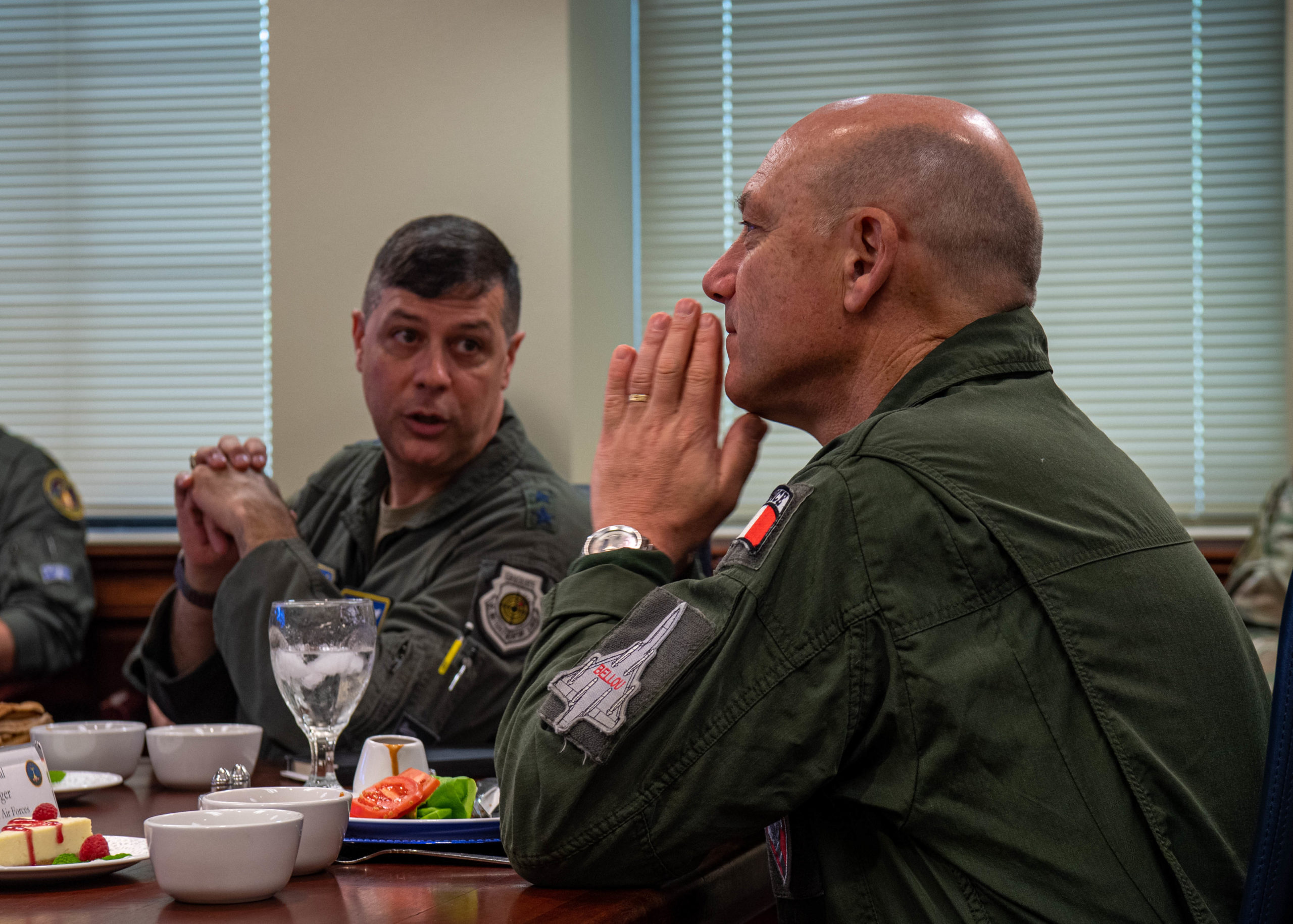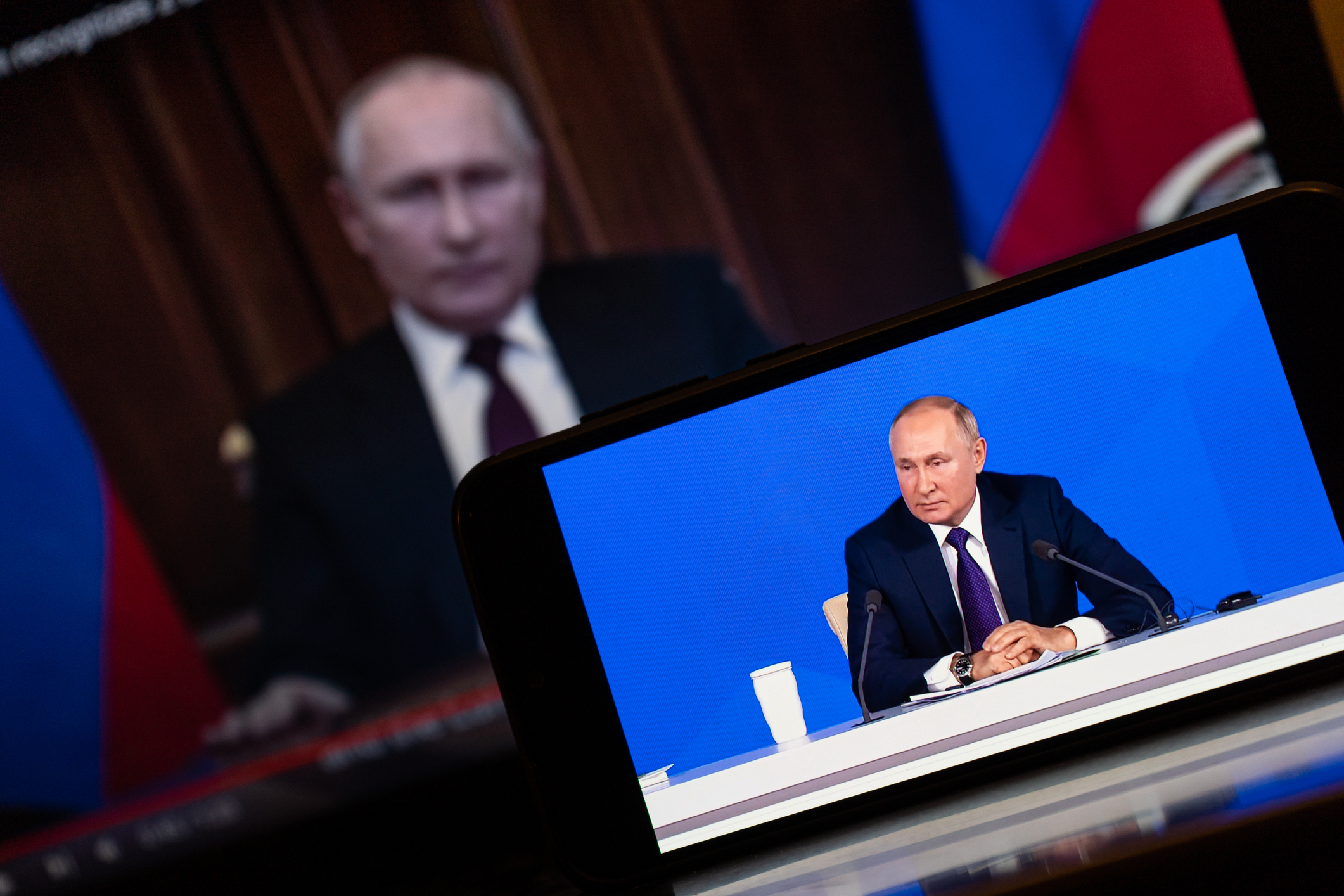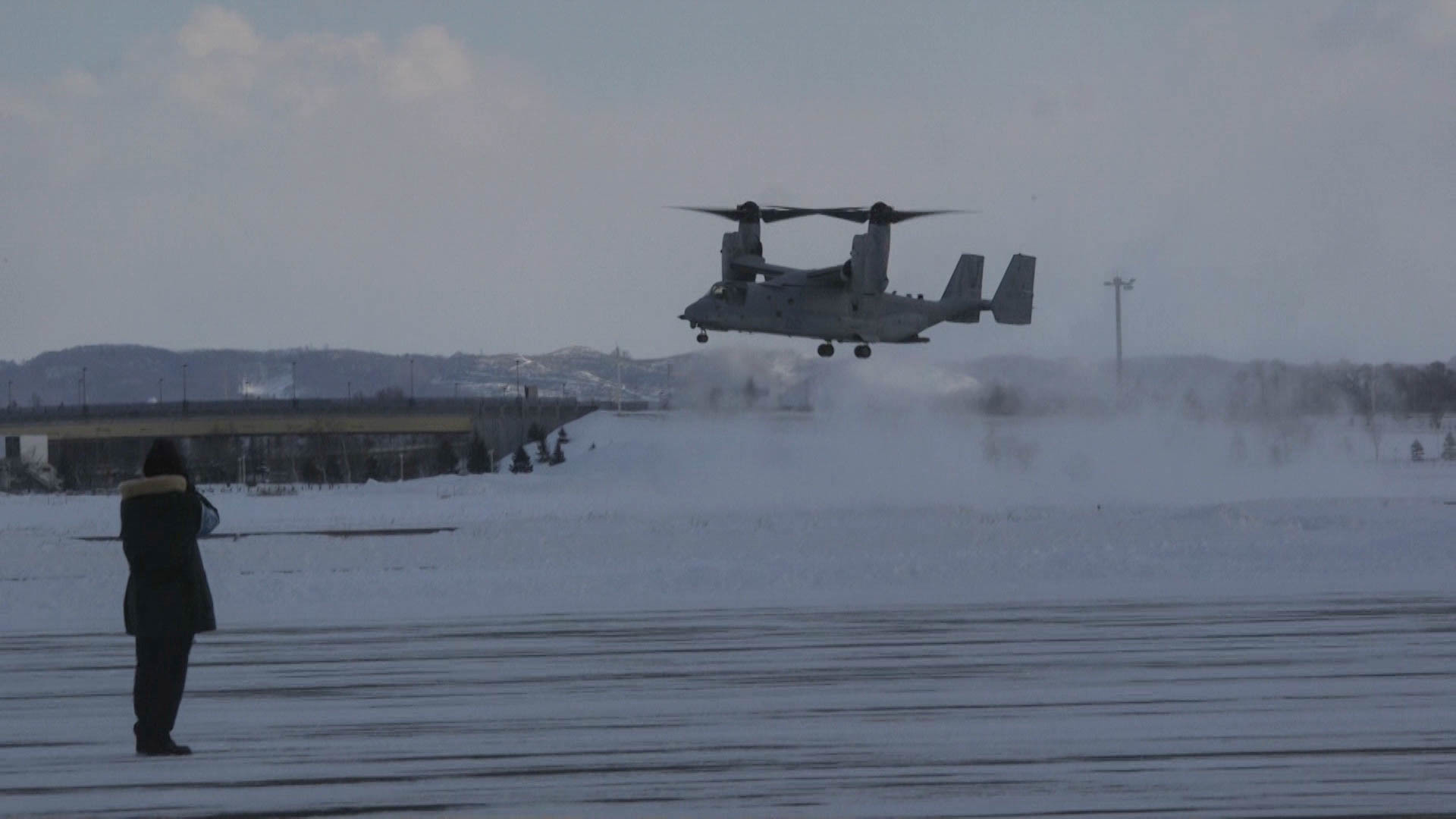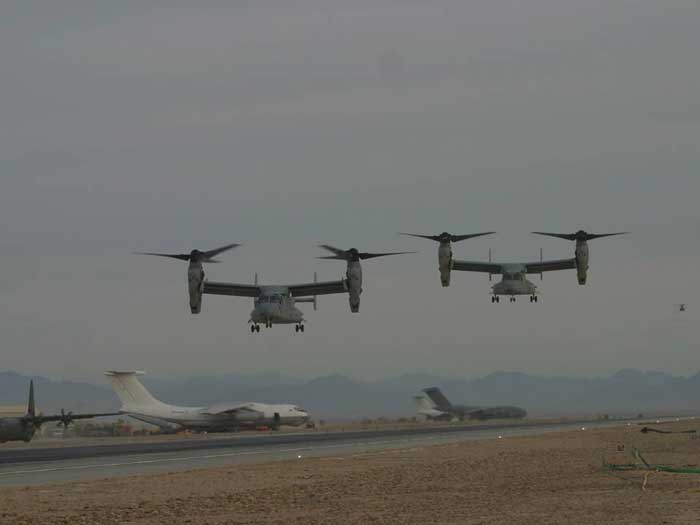By Pierre Tran
Paris – The French Air Force has requested a faster delivery of Rafale jets to replace the Mirage 2000-5 fighters due to be sent to Ukraine, the air chief of staff, General Jérôme Bellanger, told the Association des Journalistes Defense, a press club, on November 20, 2024.
The despatch of an undisclosed number of Mirage 2000-5s to help the Ukrainian service could be offset by shipping Rafales built for export clients to the French service, he said.
“We would take the exports which have not been signed,” he said.
The speeded up delivery depended on Dassault Aviation, the prime contractor which has increased production of the Rafale for client nations such as India, he said. A faster shipment of the Rafale to the French air force was possible as Dassault was increasing production to three units per month due to the export deals.
The company has previously said it took three years to build a Rafale once an order was confirmed with payment of a deposit.
The Indian authorities in July 2023 granted approval for negotiations for 26 Rafale M, the aircraft carrier version of the twin-engine fighter. That authorization also included talks for an order for three Scorpene attack submarines from Naval Group, a French shipbuilder.
France was due to ship the first batch of three Mirage 2000-5s to Ukraine in the first quarter 2025, the armed forces minister has said, an air force spokesman said.
A faster shipment of Rafale to replace the Mirage would allow deliveries to be brought forward to 2025 and 2026 from the planned delivery in 2027, the air force spokesman said.
There were already new Rafales due to be delivered to the French service in 2025, replacing the 12 Rafale fighters Paris has sold second hand in the export market to allied nations.
France signed in December 2023 an order for a 42-strong, fifth batch of Rafale, with delivery between 2027-2032, Dassault said July 23 in a statement on its 2024 first-half results. That order has long been awaited, but the military budget has been tight for quite some time.
The U.S. was sending over the F-16 fighter to boost the Ukrainian air force as a time when the exchange of fire has risen sharply.
Russia fired Nov. 21 a new intermediate range ballistic missile, the Oreshnik or Hazel Tree, at a military target in Dnipro, central Ukraine, and the Russian president, Vladimir Putin, went on television to warn Ukraine and Western allies more strikes could follow.
That Russian hypersonic missile came in response to Ukrainian forces firing long range weapons at military sites inside Russia, namely the U.S.-supplied army tactical missile systems (ATACMS) and U.K. Storm Shadow cruise missile. France has shipped to Ukraine the Scalp, its version of the cruise missile.
The Western allies had granted permission for Kyiv to use those missiles against targets inside Russia, after previously denying that authorization.
Moscow and Kyiv were seeking to win the most territory ahead of negotiations expected for a ceasefire next year, media reports said, with the U.S. president elect, Donald Trump, due to return to the White House in January for a second term.
Rafale To Maintain Capability
Meanwhile, in France, the despatch of those Mirage fighters will reduce French capability if there were not a faster delivery of the Rafale.
“That necessarily has an impact on the fighter fleet,” the air chief said when asked about the fighter deal with Kyiv.
Those Mirage 2000-5s would have flown in the French air force until 2030, he said, and there was need to smooth the transfer of the fighters to Ukraine. The armed forces minister fully understood that, he added.
The transfer of the Mirage will speed up the rate at which the Rafale will wear out, with increased orders for spare parts, he said. The service could handle that, but the long term solution was to speed shipment of new Rafale fighters.
Payment had been made for those Rafale due for delivery in 2027, the air chief said.
“It’s these aircraft ordered that we are trying to speed up and have as soon as possible,” he said, “and not necessarily wait until 2027. That compensates for the transfer.”
The air chief was confident Dassault would hit the production target of three per month, and the only problem was going above that output rate.
The Mirage deal with Kyiv was a “package,” he said, with support in France rather than in Ukraine. Training pilots and mechanics, and supply of spares and aircraft were part of that package. The U.S. would be supplying a similar package for the F-16, he said.
Saturate Skies With Threat
Ukrainian president Volodymyr Zelenskiy welcomed in August the arrival of the long awaited Lockheed Martin F-16, intended to help even the odds against the larger and highly capable Russian air force.
The plan was to fly the F-16 in longer range missions, seeking out air threats at greater distance rather than air-to-ground missions, the air chief said. They would intercept kamikaze drones, cruise missiles, and other air threats.
It was “still early days,” he said, with many lessons to be learnt.
Meanwhile, the Mirage 2000-5 had yet to be converted to air-to-ground strike mission for Ukraine. “Not yet,” he said.
The Mirage to be sent to Ukraine will be adapted to air-to-ground missions and a boosted electronic warfare capability, the French armed forces minister, Sébastien Lecornu, has said, Opex 360, a specialist website reported Nov. 11.
On combat conditions, the more the sky was saturated when there was a Scalp cruise missile attack, the greater the chance of success, the air chief said. If there were only one Scalp missile flying in the Russian air defense system, there was less chance than if there were several missiles or drones, which could also be kamikaze drones.
The “big lesson” learnt was the saturation of airspace with low cost weapons, he said.
The French service had defensive electronic countermeasures, he said, but lacked an offensive capability, such as fielded in the 1980s with the Anglo-French Jaguar fighter and Martel missile. Although there were a few S300 missiles in Libya, there was little air defense, he said. There was some American support with the Prowler, but not much.
The French service used the Martel anti-radar missile in the 2011 Western allied operation against Libya, then led by the late Muammar Gaddafi.
The Israeli air attack was a case study in electronic warfare, the air chief said, with some 20 Israeli fighters flying, yet showing up as around 120 signals on the radar of the Hezbollah in Lebanon.
The U.S. fielded the Harm missile for that anti-radar capability, but rather than France buy the weapon off the shelf, it was better to wait for the MBDA RJ 10 weapon, he said. Funds for the RJ 10 project were in the multi-year military budget law, he added.
“My main point is there is need for a stand-off missile to hit enemy surface-to-air systems,” he said.
The supersonic ramjet RJ10 and subsonic stealthy TP 15 are the missiles MBDA is developing for the future cruise/anti-ship weapons (FC/ASW) project for France and the U.K. The European missile company displayed life sized models of the two weapons at Euronaval, a trade show which ran Nov. 4-7 in Villepinte, just outside the capital.
2035 Will Be Milestone Year
The European project for a future combat air system (FCAS) was going well, the air chief said, adding that a meeting had been held a couple of weeks ago with his German and Spanish counterparts.
A model was due to undergo the first wind tunnel tests to define the architecture as part of phase 1B, he said. The partners would decide at the end of 2025 or early 2026 to move on to phase 2 to build the FCAS technology demonstrator, with the new generation fighter (NGF) at the heart of the system.
The general election to be held in Germany would slow the project, he said. The key dates for service for FCAS were 2040-2045, while 2035 marked a “key milestone.”
The latter date drove a planned Rafale upgrade to an F5 version that would carry the ASN4G missile, he said. That will be a “game changer,” a project which “prefigures” the FCAS.
The ASN4G will be a fourth-generation, air-to-ground nuclear-tipped missile to replace the ASMPA supersonic missile, which is undergoing a midlife upgrade with the ASMPA-R (Renové) version.
The plan was for delivery of the Rafale F5 in 2033 and qualification tests for two years, with the upgraded fighter entering service in 2035 with a hypersonic nuclear weapon, the air chief said.
A Rafale B of the French air force test fired May 22 for the first time an ASMPA-R missile, without a nuclear warhead, the Direction Générale de l’Armement procurement office said in a statement.
That test fire was part of the Durandal exercise for an airborne nuclear raid, the DGA said, with the Rafale supported by A330 Phénix air tankers, pitched against an air defense consisting of air-to-air and surface-to-air missiles of the French air force.
The Rafale F5 will also fly with an uncrewed combat aerial vehicle (UCAV), the air chief said.
The UCAV will be based on a French-built stealthy demonstrator, dubbed Neuron, which was partnered by Italy, Greece, Spain, Sweden, and Switzerland.
The UCAV will be an “airborne sensor,” supporting the Rafale F5, which will carry the “real nuclear weapon,” to penetrate enemy airspace.
The work on the F5 version would help prepare ground for the FCAS – or not, he said.
There has been conjecture that an upgraded Rafale F5 and its UCAV loyal wingman could be a plan B substitute for the European FCAS, which includes remote carriers or combat drones, and a combat cloud for a communications network.
That fall-back to an all-French project was due to a previous bid by Airbus Defense and Space to claim a joint prime contractor status on the fighter project rather than accept Dassault as the lead actor.
Russia Mass Produces Drones
The Russian war economy was building large volumes of low-cost kamikaze drones and also high-cost Kinzhal air-launched missiles, the air chief said.
“The concept of operations has changed and has become effective,” he said. They saturated the Ukrainian airspace with cruise missiles, ballistic missiles, laser-guided bombs, and used electronic warfare.
The Russians were dropping 1,800 bombs a week over Ukraine, and that was separate from the cruise and ballistic missiles, and drones, he said.
Featured photo: This photos is from 2023 prior to General Jérôme Bellanger becoming Chief of Staff.
U.S. Air Force Maj. Gen. Andrew Gebara, left, Eighth Air Force and Joint – Global Strike Operations Center commander, speaks with French Air and Space Force Lt. Gen. Jérôme Bellanger, commander of French Strategic Air Forces Command, during a visit to Barksdale Air Force Base, La., May 30, 2023.
BARKSDALE AIR FORCE BASE, LOUISIANA
05.30.2023
Photo by Staff Sgt. Codie Trimble
8th Air Force/J-GSOC






